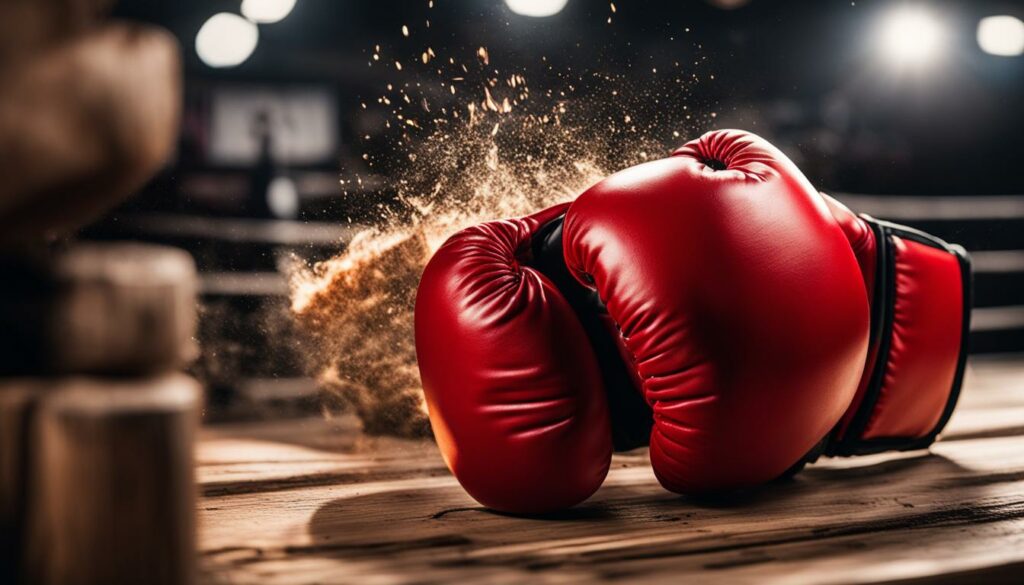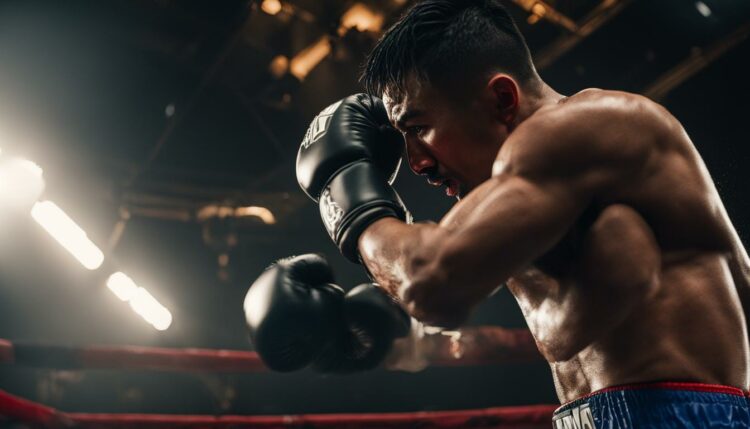Boxing is becoming increasingly important in the world of MMA. Many top-level mixed martial artists are incorporating boxing techniques into their arsenal and achieving great success. This article will analyze the role of boxing in MMA, exploring how boxers can effectively transition to the sport and use their striking skills to dominate inside the cage. We will delve into the fundamental boxing techniques that can be applied in MMA, providing tips and insights for boxers looking to make the switch.
As the popularity of MMA continues to grow, so does the importance of having well-rounded skills. While grappling and submissions are essential, the ability to strike effectively can make a significant difference in a fighter’s success. Boxers bring their refined punching techniques, footwork, and head movement into the MMA arena, providing a unique advantage.
In this article, we will explore the differences between boxing and MMA, the adaptation of boxing techniques in the MMA context, and the evolving role of striking styles in the sport. Whether you are a boxer considering a transition or an MMA enthusiast looking for insights into the role of boxing in the cage, this article has you covered.
Boxing vs. MMA: Understanding the Differences
The transition from boxing to MMA is not as simple as it may seem. While boxing is an important base for striking in MMA, there are significant differences between the two sports. One major distinction is the size of the gloves. Boxing gloves provide more padding and allow for easier parrying and deflection of punches. In MMA, the gloves are smaller, making it more challenging to defend against incoming strikes.
Additionally, in MMA, other striking weapons such as kicks, elbows, and knees can be used, changing the fight’s dynamic. Boxers must also adapt to the inclusion of grappling and ground fighting in MMA, which is not a part of traditional boxing. This requires developing wrestling and Brazilian Jiu-Jitsu skills to effectively compete in the cage.
It is crucial for boxers transitioning to MMA to understand and adapt to these differences. They must learn to strike from different ranges, defend against various attacks, and develop a well-rounded skill set, including grappling and submissions. By recognizing and embracing these differences, boxers can successfully transition and thrive in MMA.
Applying Boxing Techniques in MMA
When it comes to applying boxing techniques in MMA, boxers need to make certain adjustments to accommodate the unique rules and requirements of the sport. While boxing skills can undoubtedly be practical inside the cage, it’s vital to understand the nuances of MMA and adapt accordingly.
One important aspect to consider is the striking range. In boxing, fighters often throw long combinations, but in MMA, this can leave them vulnerable to takedowns. Boxers transitioning to MMA should focus on shorter, more concise combinations, allowing quicker defensive reactions and better positioning.
Feinting is another crucial skill for boxers to utilize in MMA. Boxers can deceive their opponents by effectively feinting and creating openings for devastating strikes. This helps set up their offense and forces their opponents to react and potentially make mistakes. Employing feints strategically can be a game-changer in MMA bouts.
Defensive Footwork in MMA
Defensive footwork is a vital aspect of MMA for any striker, including boxers. In boxing, blocking punches with gloves and forearms is common, but this leaves fighters susceptible to takedowns in MMA. Proper defensive footwork enables boxers to maintain distance, avoid takedowns, and create angles for effective counterstrikes. Prioritizing footwork that emphasizes evasiveness rather than merely relying on blocking techniques is crucial.
Overall, boxers transitioning to MMA must recognize the need for adaptation. While their boxing skills provide a strong foundation, they must consider the specific demands of MMA. Boxers can effectively apply their boxing techniques in mixed martial arts by adjusting their striking range, utilizing feints strategically, and emphasizing defensive footwork.
The Evolution of Striking Styles in MMA

The debate over the best striking style for MMA fighters continues to evolve as the sport progresses. Traditional martial arts like Muay Thai, with its powerful kicks and knee strikes, have long been seen as the ideal base for striking in MMA. However, the rise of boxers like Jorge Masvidal has challenged this notion and highlighted the effectiveness of boxing techniques in the cage. The advantages of boxing in MMA have become more apparent as fighters have showcased their head movement, precision punching, and defensive skills.
Boxers bring a unique skill set to the MMA arena. The emphasis on footwork, defensive maneuvers, and quick, accurate strikes has allowed boxers to excel in close-quarter combat and evade opponents’ attacks. The ability to slip punches and counter effectively has proven crucial in striking exchanges and has led to knockout victories for many boxers in MMA.
While Muay Thai remains an important striking style in MMA, the incorporation of boxing into an MMA fighter’s skill set can offer distinct advantages. By combining the precision punching of boxing with the devastating kicks and clinch work of Muay Thai, fighters can create a well-rounded striking arsenal that keeps opponents guessing. This hybrid style allows for a more dynamic and unpredictable approach, as fighters can seamlessly switch between different striking techniques and adapt to the changing dynamics of a fight.
As the sport of MMA continues to evolve, so too does the understanding of striking styles and their role in the cage. While no single striking style can be considered superior in all aspects of MMA, the incorporation of boxing techniques into an MMA fighter’s toolkit has proven to be a game-changer. The evolution of striking styles in MMA is an ongoing process, as fighters constantly explore new techniques and adapt to the ever-changing landscape of the sport.
| Advantages of Boxing in MMA |
|---|
| 1. Precise punching and accuracy |
| 2. Effective head movement and footwork |
| 3. Defensive skills and ability to slip punches |
| 4. Counter-striking abilities |
| 5. Seamless transition between striking techniques |
The Well-Rounded MMA Fighter
Modern MMA fighters have witnessed a significant evolution in the sport, where being a well-rounded fighter has become a crucial aspect of success. Gone are the days when fighters relied solely on one martial art discipline to dominate their opponents. Instead, the importance of all aspects of fighting, including striking, wrestling, Brazilian Jiu-Jitsu, and more, has become evident.
Today’s MMA fighters understand that to excel in the cage, they must develop proficiency in multiple disciplines. Strikers like Anderson Silva and Chuck Liddell have showcased their striking skills, while wrestlers such as Randy Couture and Dan Henderson have demonstrated the effectiveness of their grappling techniques. These fighters embody the idea that being a well-rounded MMA fighter is essential.
The evolution of MMA as a sport has led to the recognition that no martial art is superior in every aspect. The combination of various techniques from different disciplines enables fighters to adapt to different situations and opponents. The versatility of a well-rounded fighter allows them to excel both in stand-up exchanges and on the ground.
As the sport progresses, the emphasis on being a well-rounded MMA fighter becomes even more significant. Trainers and fighters alike recognize the need to develop their skills in all aspects of fighting continually. By doing so, they can adapt to the ever-evolving landscape of MMA and stay competitive in a sport that demands versatility and adaptability from its athletes.
FAQ
Can boxing techniques be used in MMA?
Yes, many top-level mixed martial artists incorporate boxing techniques into their striking arsenal in MMA and achieve great success.
What are the differences between boxing and MMA?
One major difference is the size of the gloves, with boxing gloves providing more padding. In MMA, smaller gloves make it more challenging to defend against strikes. Additionally, MMA allows for the use of kicks, elbows, and knees.
How can boxers adapt boxing techniques to MMA?
Boxers transitioning to MMA need to understand and adapt to the unique rules and requirements of the sport. They should focus on using feints, defensive footwork, and maintaining the right striking range to avoid being taken down.
Is boxing or muay thai a better base for MMA?
While muay thai has traditionally been considered the optimal base, boxers like Jorge Masvidal have demonstrated the effectiveness of boxing techniques against muay thai-centric opponents. Both styles have their advantages, but boxers can benefit from prioritizing boxing and supplementing it with muay thai skills.
What skills are essential for a well-rounded MMA fighter?
Success in modern MMA requires competence in striking, wrestling, Brazilian Jiu-Jitsu, and other disciplines. Being well-rounded and proficient in all aspects of fighting is crucial in the sport’s evolution.
